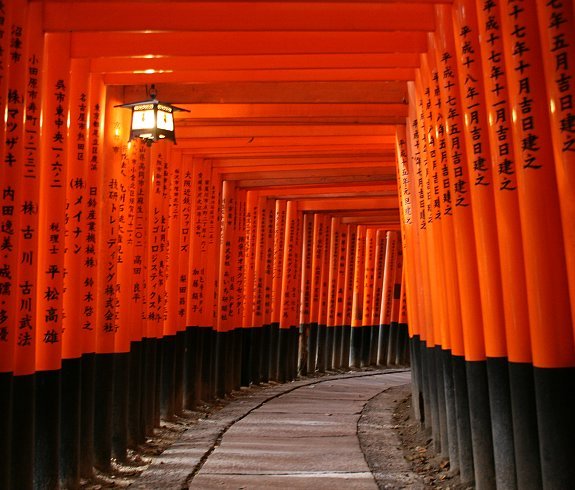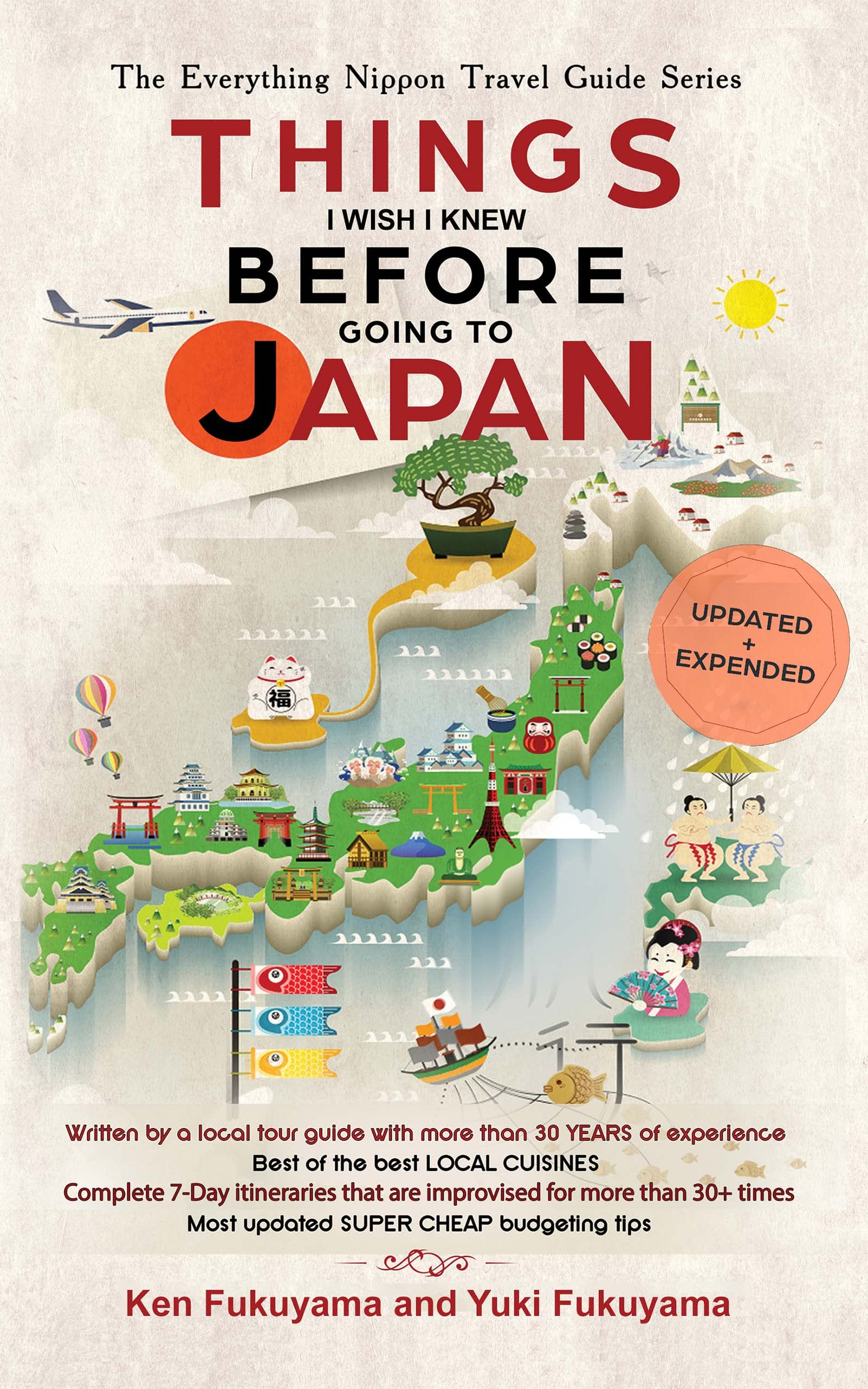Win a Free Trip to Japan!
Experience cherry blossoms and ancient temples
If you’re eager to immerse yourself in rich history and vibrant culture, Japan’s historic cities offer a journey like no other. From the serene temples of Kyoto to the traditional streets of Nara, each city tells a unique story that has shaped the nation. This Japan Travel Guide will help you navigate through these remarkable sites, showcasing their cultural significance and must-see landmarks. Get ready to explore breathtaking architecture and experience local traditions that reflect the heart of Japan.
Introduction to Japan’s Historic Cities
Japan boasts an extraordinary tapestry of historic cities, each offering a unique glimpse into the nation’s rich cultural heritage. As you embark on your journey through Japan, refer to a comprehensive Japan Travel Guide to navigate the historical treasures that await.
Why Explore Historic Cities?
- Cultural Heritage: These cities bear witness to Japan’s enduring traditions and architectural splendors, from ancient temples to traditional wooden houses.
- Rich History: Each city narrates stories from different eras, showcasing Japan’s evolution through wars, peace, and modernity.
- Local Experiences: Engage with local customs, festivals, and crafts that thrive in these time-honored locales.
Top Historic Cities To Consider:
| City | Key Features |
|---|---|
| Kyoto | Famous for its Zen gardens, shrines, and historic geisha districts. |
| Nara | Home to impressive temples and the majestic Nara Park. |
| Kanazawa | Renowned for its preserved samurai and geisha districts. |
| Osaka | A vibrant mix of contemporary culture and ancient traditions. |
In your Japan Travel Guide, prioritize these cities for an immersive experience. Each destination has its own charm and significance, making them crucial stops on your historic adventure through Japan. Embrace the past, explore the present, and appreciate the living heritage that defines Japan’s historic cities.

Top Historic Cities to Visit in Japan
Japan boasts a rich tapestry of history woven into its cities. For anyone utilizing a Japan Travel Guide, here are some must-visit historic cities that encapsulate the nation’s cultural heritage:
-
Kyoto
- Once the imperial capital, it features stunning temples, shrines, and traditional wooden houses.
- Highlights: Kinkaku-ji (Golden Pavilion), Fushimi Inari Taisha, and the Gion district.
-
Nara
- Known for its ancient treasures, Nara is home to Japan’s first permanent capital.
- Highlights: Todai-ji Temple, Nara Park with free-roaming deer, and Kasuga-taisha Shrine.
-
Kanazawa
- Celebrated for its well-preserved Edo-period districts, Kanazawa offers a glimpse of traditional Japan.
- Highlights: Kenrokuen Garden, Nagamachi samurai district, and the 21st Century Museum of Contemporary Art.
-
Osaka
- A vibrant city with a rich history, Osaka boasts a blend of modernity and tradition.
- Highlights: Osaka Castle, Shitenno-ji Temple, and the bustling Dotonbori area.
Comparison Table of Historic Cities
| City | Key Attraction | Cultural Significance |
|---|---|---|
| Kyoto | Kinkaku-ji | Traditional architecture and Zen gardens |
| Nara | Todai-ji | Birthplace of Japanese Buddhism |
| Kanazawa | Kenrokuen Garden | Exemplifies Japanese landscape gardening |
| Osaka | Osaka Castle | Symbol of power during the feudal era |
In summary, when using a Japan Travel Guide, these cities offer each traveler a unique lens through which to view Japan’s historic past. Each city provides a distinct cultural experience, reminding us of the enduring beauty of tradition in progress.
Cultural Significance of Japan’s Historic Sites
Japan’s historic cities offer a rich tapestry of culture, reflecting the nation’s values, beliefs, and artistic heritage. As you delve into the heart of this Japan Travel Guide, consider the following points highlighting the cultural significance of these remarkable sites:
- Preservation of Tradition: Many historic sites, such as temples and shrines, serve as guardians of Japanese traditions and religious practices. They embody centuries-old customs, festivals, and rituals that continue to thrive today.
- Artistic Legacy: The architecture of Japan’s historic cities showcases distinctive aesthetics, from the serene gardens of Kyoto to the intricately designed streets of Kanazawa. These designs often blend with nature, emphasizing harmony and balance—core principles in Japanese culture.
- Historical Narratives: Each site tells a unique story. For instance, the ancient streets of Nara were once the capital, offering a glimpse into imperial Japan. Learning these narratives enriches your travel experience, providing context to what you see.
- Cultural Exchange: Many historic sites act as cultural hubs where art, food, and traditions from different areas converge. For example, Osaka combines modernity with historical significance, illustrating Japan’s ability to adapt while honoring the past.
Engaging with these cultural landmarks not only enhances your understanding of Japan but also fosters respect for a vibrant cultural heritage. Be sure to include these insights in your Japan Travel Guide to make the most of your journey.
Must-See Landmarks in Kyoto
Kyoto, the heart of Japan’s historical and cultural heritage, boasts numerous landmarks that reflect its rich past. When planning your journey, a solid Japan Travel Guide will highlight the must-see sites that truly capture the essence of this city. Here are some essential landmarks to include in your itinerary:
-
Kinkaku-ji (Golden Pavilion):
- A Zen Buddhist temple covered in gold leaf, surrounded by serene gardens and a reflective pond.
-
Fushimi Inari Taisha:
- Famous for its thousands of vermilion torii gates, this shrine honors Inari, the deity of rice and agriculture.
-
Kiyomizu-dera:
- Known for its wooden stage that offers stunning views of cherry and maple trees, especially during spring and fall.
-
Gion District:
- The iconic geisha district, filled with traditional wooden machiya houses, tea houses, and shops.
-
Nijo Castle:
- A UNESCO World Heritage Site, this castle showcases stunning gardens and architecture, highlighting the power of the shoguns.
| Landmark | Cultural Significance | Best Time to Visit |
|---|---|---|
| Kinkaku-ji | Symbol of Zen Buddhism | Spring & Autumn |
| Fushimi Inari Taisha | Spiritual center for Inari worship | Anytime |
| Kiyomizu-dera | Historical Buddhist cultural site | Spring (cherry blossoms) |
| Gion District | Cultural heart of geisha tradition | Evening for nightlife |
| Nijo Castle | Representation of shogunal power | Spring (flower bloom) |
Including these landmarks in your Japan Travel Guide will enrich your experience in Kyoto. Each site offers a unique glimpse into Japan’s storied past, making your visit unforgettable.

Exploring the Ancient Streets of Nara
Nara, Japan’s first capital, is a treasure trove of historic charm and cultural richness. As you wander its ancient streets, you will encounter a harmonious blend of tradition and nature. Here are the highlights you don’t want to miss in your Japan Travel Guide:
- Nara Park: Home to over 1,000 free-roaming deer, this expansive park is a delightful place to experience the symbiotic relationship between nature and culture. Don’t forget to buy special crackers to feed the deer!
- Todai-ji Temple: This UNESCO World Heritage site houses the Great Buddha (Daibutsu), a colossal bronze statue that stands impressively at 15 meters tall. The temple itself is an architectural marvel and a central part of Nara’s heritage.
- Kasuga-taisha Shrine: Famous for its many bronze and stone lanterns, this shrine is not just a spiritual site but also a picturesque retreat that showcases seasonal beauty.
- Historic Streets: Stroll through Naramachi, the historic district, and explore traditional wooden houses, shops, and cafes. The preserved Edo-period architecture offers a glimpse into the past.
| Attraction | Highlights | Entry Fee |
|---|---|---|
| Nara Park | Free-roaming deer, scenic landscapes | Free |
| Todai-ji Temple | Great Buddha, stunning architecture | ¥600 |
| Kasuga-taisha Shrine | Beautiful lanterns, serene pathways | Free / Optional Donations |
In your Japan Travel Guide, include Nara for an authentic experience of Japan’s ancient heritage. Exploring Nara’s streets is not just a journey through time; it’s an immersion into the very essence of Japanese culture.
The Heritage of Kanazawa
Kanazawa, known for its rich traditions and stunning historic sites, offers a captivating glimpse into Japan’s cultural heritage. As part of your Japan Travel Guide, Kanazawa should be at the top of your itinerary for its unique attributes that blend history, nature, and artistry. Here’s what makes Kanazawa a must-visit:
Key Features of Kanazawa:
- Well-Preserved Edo Period Districts: Wander through the Nagamachi Samurai District and the Higashi Chaya geisha quarter. These areas transport you back in time with narrow streets, traditional wooden houses, and beautiful teahouses.
- Kenrokuen Garden: Recognized as one of Japan’s three great gardens, Kenrokuen is a serene space showcasing seasonal beauty with its plum blossoms, vibrant azaleas, and winter snow scenes.
- 21st Century Museum of Contemporary Art: This striking museum juxtaposes Kanazawa’s historic charm with modern artistry, featuring works from both Japanese and international artists.
Comparison: Kanazawa vs. Other Historic Cities
| Feature | Kanazawa | Kyoto | Nara |
|---|---|---|---|
| Edo Period Influence | Strong (Samurai and Geisha) | Significant (Temples, Shrines) | Moderate (Temples) |
| Natural Landscapes | Extensive (Gardens) | Limited (Temples) | Limited (Parks) |
| Contemporary Arts | Notable (21st Century Museum) | Minimal | Minimal |
| Cultural Festivals | Unique (Kanazawa Festival) | Numerous (Gion Matsuri) | Seasonal Events |
Incorporating Kanazawa into your Japan Travel Guide will enrich your journey through Japan’s rich history and vibrant culture. Experience the delicate balance between old and new, ensuring an unforgettable exploration of Japanese heritage.
Osaka: A Blend of Modern and Traditional
Osaka stands out as a vibrant metropolis where modernity intertwines seamlessly with rich traditions. This city, often overlooked in favor of Tokyo, boasts a unique charm that captivates travelers. In this Japan Travel Guide, we’ll explore what makes Osaka an essential stop on your journey through Japan’s historic cities.
Modern Marvels
- Sky Garden: Experience breathtaking views of the city from the Umeda Sky Building.
- Universal Studios Japan: Dive into thrilling experiences at one of the top theme parks in the world.
Traditional Treasures
- Osaka Castle: Visit this iconic castle, which showcases elegant architecture and beautiful gardens.
- Shitenno-ji Temple: As one of Japan’s oldest temples, it offers a glimpse into the spiritual heritage of the country.
Comparison of Sights
| Category | Modern Highlights | Traditional Highlights |
|---|---|---|
| Architecture | Umeda Sky Building | Osaka Castle |
| Attractions | Universal Studios Japan | Shitenno-ji Temple |
Culinary Fusion
Don’t miss Osaka’s reputation as the "Kitchen of Japan". Savor delicious local delicacies like takoyaki and okonomiyaki while wandering the bustling streets.
In summary, Osaka represents a dynamic blend of modern excitement and historical depth, making it a must-visit destination in your Japan Travel Guide. Whether you’re exploring glitzy skyscrapers or ancient temples, you’ll find a rich tapestry of culture waiting to be discovered.

Tips for Travelling Between Historic Cities
Navigating Japan’s historic cities can be a seamless experience with the right planning. Here are essential tips to efficiently travel between these culturally rich destinations, making your journey as smooth as possible.
- Use the Japan Rail Pass: Consider getting a Japan Rail Pass if you’re traveling to multiple cities. This pass offers unlimited travel on most trains, including the famous Shinkansen (bullet trains), for a set duration. It’s cost-effective and highly convenient.
- Plan Your Route: Research and map out your itinerary in advance. Major cities are well-connected, so use the Japan Travel Guide to find the best train routes and schedules.
- Travel Off-Peak: To avoid crowds and enjoy a more peaceful journey, travel during off-peak hours. Trains are generally less busy mid-morning or late afternoon.
- Check Local Transport: Familiarize yourself with local transportation systems within each city. Most historic areas offer convenient buses and subways. Use apps like Hyperdia for real-time information.
- Pack Light: Bring only essentials during day trips. Lighter bags make navigating train stations and cobbled streets more manageable.
By following these tips, you’ll make the most of your time exploring Japan’s historic cities. With the right strategy, your experience will become an unforgettable journey steeped in culture, history, and tradition. Always refer to your Japan Travel Guide to enhance your travel experience!
Experiencing Local Cuisine and Traditional Arts
Embarking on a journey through Japan’s historic cities offers more than just stunning sights—it immerses you in rich culinary traditions and vibrant arts. Your Japan Travel Guide should emphasize these experiences, as they form the heart of Japan’s culture.
Local Cuisine Highlights
- Kyoto: Enjoy kaiseki, a multi-course meal featuring seasonal ingredients, presented beautifully.
- Nara: Indulge in kakinoha sushi, unique leaf-wrapped sushi that reflects the region’s heritage.
- Kanazawa: Savor fresh seafood and wagashi, traditional Japanese sweets, showcasing regional flavors.
- Osaka: Try the famous street food—takoyaki (octopus balls) and okonomiyaki (savory pancakes) that blend tradition with modern flair.
Traditional Arts to Explore
- Calligraphy (Shodo): Participate in a workshop where you can learn this ancient art, allowing for a personal souvenir from your travels.
- Tea Ceremony (Chanoyu): Experience the meticulous process of the Japanese tea ceremony, a ritual that embodies harmony and respect.
- Kimono Wearing: Rent a kimono for a day to walk the streets of Kyoto or Nara, enriching your historical journey.
This immersive approach connects you more profoundly with the culture. By tasting local dishes and engaging in traditional arts, you will gain a deeper appreciation for Japan’s rich heritage, making your Japan Travel Guide not just a map, but a gateway to unforgettable experiences.
Preserving the History: How to Be a Responsible Traveler
When exploring the rich tapestry of Japan’s historic cities, being a responsible traveler is crucial. Here are some essential guidelines to ensure you honor and preserve the cultural heritage of this stunning country while enjoying your visit.
- Respect Local Customs: Each region has unique traditions; take the time to learn about them. For instance, in Kyoto, bowing as a greeting is common, while in temples, visitors often need to remove their shoes.
- Support Local Economies: Choose to shop at local markets and dine in family-run restaurants. This practice helps sustain local industries and promotes cultural appreciation.
- Mind the Environment: Maintain cleanliness by disposing of waste correctly. Consider carrying a reusable water bottle and shopping bag to minimize plastic waste.
- Use Guided Tours Wisely: Opt for guided tours led by locals who can provide context and stories about the sites. They often prioritize responsible tourism and educate visitors on cultural significance.
- Take Only Memories: Avoid collecting artifacts or plants from historic sites. Instead, photograph your experiences, creating lasting memories without disturbing the environment.
By following these principles in your Japan Travel Guide, you contribute to the preservation of Japan’s cultural treasures for future generations. Responsible tourism not only enhances your travel experience but also ensures that these historic sites remain vibrant and intact.
Frequently Asked Questions
What are some of the must-visit historic cities in Japan?
Japan boasts several magnificent historic cities that provide a glimpse into its rich cultural heritage. Notable among these are Kyoto, known for its well-preserved temples, gardens, and traditional tea houses; Nara, which is home to the majestic Todai-ji Temple and free-roaming deer in Nara Park; and Kanazawa, celebrated for its stunning samurai and geisha districts. Additionally, Hiroshima, with its Peace Memorial Park, and Nagasaki, steeped in unique international influences, are also worth visiting for their historical significance.
What is the best time to visit Japan’s historic cities?
The optimal times to explore Japan’s historic cities are during the spring (March to May) and autumn (September to November) months. Spring showcases the breathtaking cherry blossoms, particularly in cities like Kyoto and Tokyo, while autumn features stunning foliage. Both seasons provide mild weather, enhancing outdoor exploration and sightseeing. Additionally, these periods often coincide with various cultural festivals, offering travelers unique insights into local traditions and customs.
How can travelers navigate between Japan’s historic cities?
Travelers can conveniently navigate between Japan’s historic cities using the Shinkansen, or bullet train, which offers rapid and efficient transportation. The Japan Rail Pass is a cost-effective option for tourists, allowing unlimited travel on most JR trains, including the Shinkansen. Alternatively, local trains, buses, and domestic flights are available, and in many cities, walking is a great way to enjoy the scenic views and quaint streets, especially in areas like Kyoto.
What cultural etiquette should be observed when visiting historic sites in Japan?
When visiting historic sites in Japan, it is crucial to observe proper cultural etiquette. Visitors should bow slightly upon greeting and remove shoes before entering homes, certain temples, or traditional ryokans (inns). Speaking softly and maintaining respectful silence in sacred places is essential. Photographs may not be allowed in certain areas, so it’s wise to seek permission. Additionally, appropriate attire, particularly in religious sites, is encouraged to show respect for the local customs.
Are there any guided tours available in Japan’s historic cities?
Yes, there are numerous guided tours available in Japan’s historic cities, catering to various interests. These tours often include knowledgeable local guides who provide in-depth insights into history, architecture, and culture. Options range from walking tours of Kyoto’s temples to guided food experiences in Kanazawa, where travelers can taste traditional cuisine. Many companies also offer bike tours, giving visitors a more immersive experience. Booking in advance is advisable, especially during peak travel seasons.
